| Dr. Peter Ungar (far left), Dr. Charles Adams (far right) and the Tanzania group snap a photo with the members of the Datoga tribe, just one of the groups that the team spent time with in Tanzania |
I got lucky to be a part of this group, but my personal arsenal of stories and photos captured only a snapshot of all that this experience had to offer....
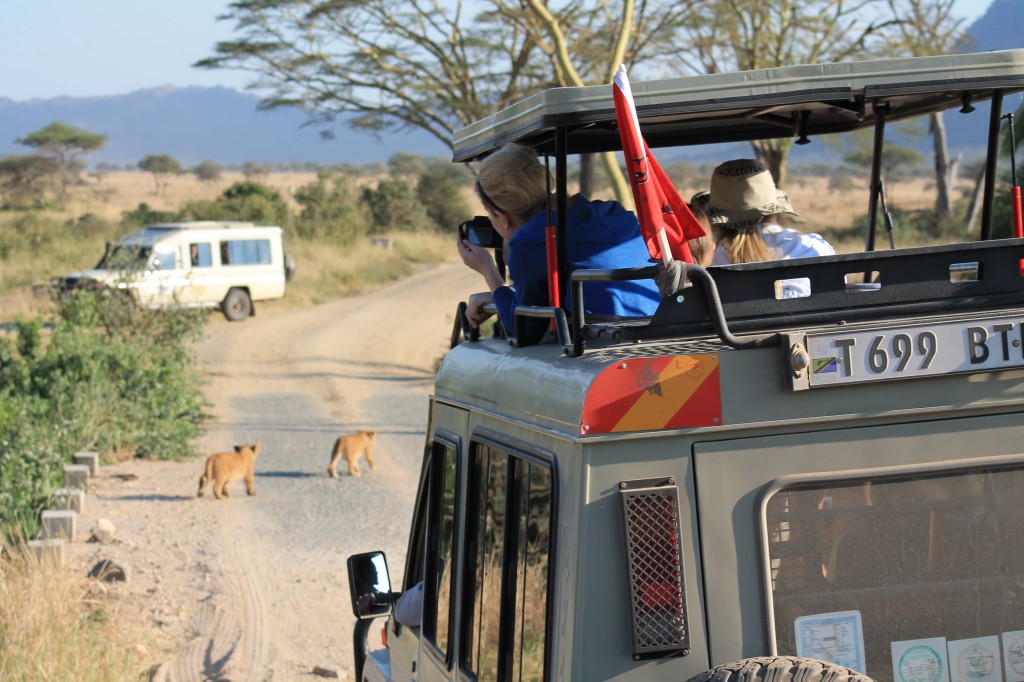 |
| In Serengeti National Park, honors student Emily Barber catches two lion cubs crossing the road. Photo by Holly Hilliard. |
The Tanzania program was a quintessential example of experiential
learning – that is, a chance to take our education outside of the
classroom and into the world. A risky endeavor, we all began our journey
with relatively similar perceptions of the social, political and
physical environments of Tanzania.
We all returned with an entirely unique lens for reflection. The
result resembled a mosaic: for some, it was the vast scope of the
Tanzanian landscape that swept us up and humbled us to the core. For
others, the wildlife sparked new connections between our roles as humans
and our environment. For others still, it was the people of this
country who made the largest impact.
Emily Barber – Political Science
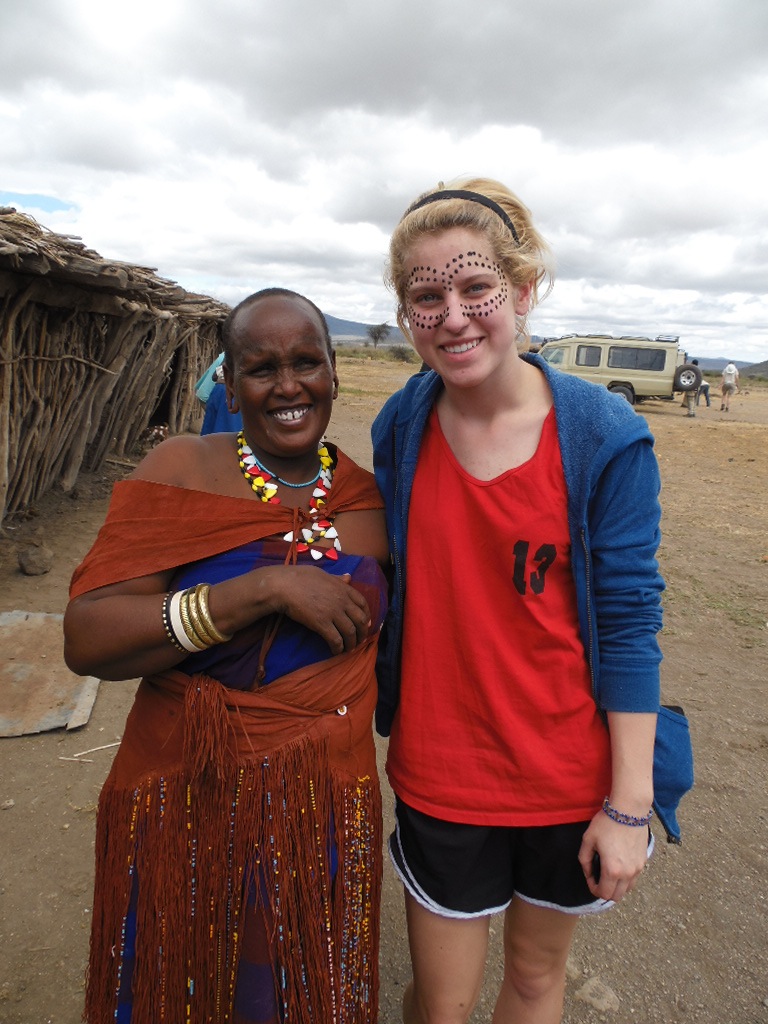 |
| Emily Barber wears a temporary version of the permanent facial tattoo of Datoga women, an iconic practice within their tribe |
There’s really no way to prepare for a visit to Africa. Friends
and family asked me for weeks before I left, “Are you ready? Has it set
in yet?” And truthfully, it hadn’t. It didn’t set in during my 19 hours
in the sky, or when I was fumbling through customs in Swahili at
Kilimanjaro Airport. It didn’t set in as our bus drove on the left side
of the road all the way to Arusha, or even when I handed over all my US
dollars in exchange for orange and blue shillings covered in roaring
lions.
It didn’t set in until I was sitting in the middle of an open
field in Maasailand with two young Maasai warriors, speaking to them
with only a combination of gestures and broken Swahili. We had no
arranged visits with Maasai, as they are generally less open to
interaction with foreigners, but had happened upon them while searching
for a dropped cell phone. They spoke no English and very little Swahili,
and were a bit afraid of my camera at first. After fifteen minutes of
interaction with these two members of one of the world’s most
fascinating and isolated tribes, it finally set in. I was in Tanzania.
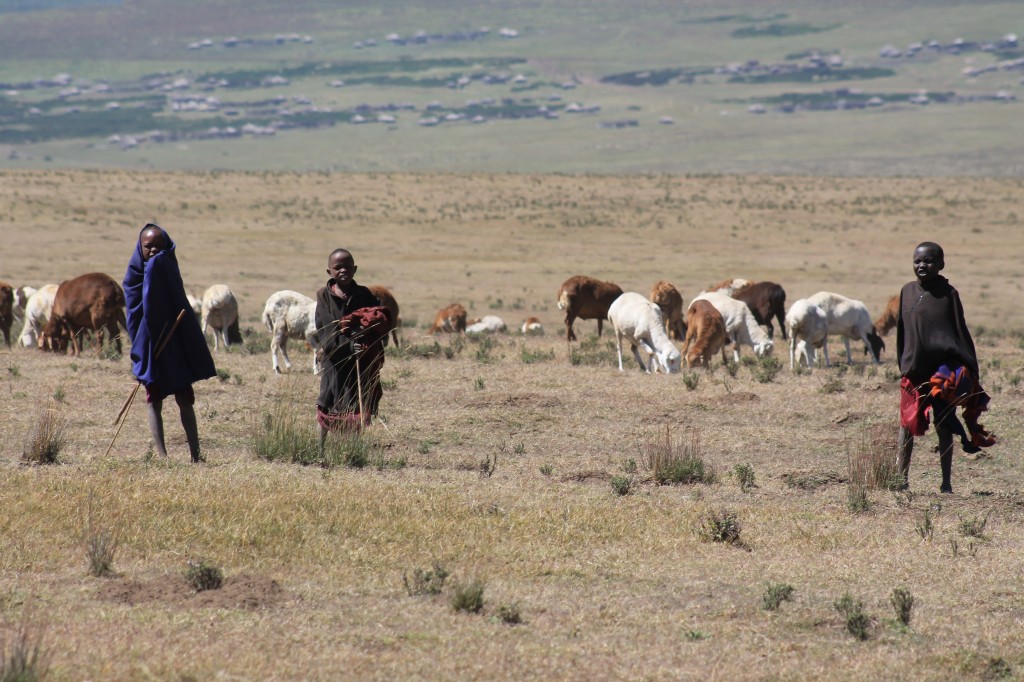 |
| Maasai,
who live a semi-nomadic lifestyle, are the only tribe allowed to live
in Tanzania’s protected Ngorongoro Crater. Photo by Holly Hilliard. |
Katie Sargent – Anthropology
contrast, it is a fascinating
mixture of the old and new—traditional architecture covered in
advertisements for Coke, Maasai warriors with cell phones, ancient
vessels with modern engines,
and hunter gatherers with Survivor
t-shirts. Small villages filled with dirt and trash dot the resplendent
landscape. And amidst the miasma of poverty, conflict, and fear, the
people remain—they are kind,
resourceful, determined, cheerful, and
entirely beautiful. At one point, I and some other members of our group played Frisbee with a few of them on the beach. This is yet another example of the reality of Tanzania—its culture and history are not stagnant.
They are being written and rewritten every day as different cultures meet in new ways.
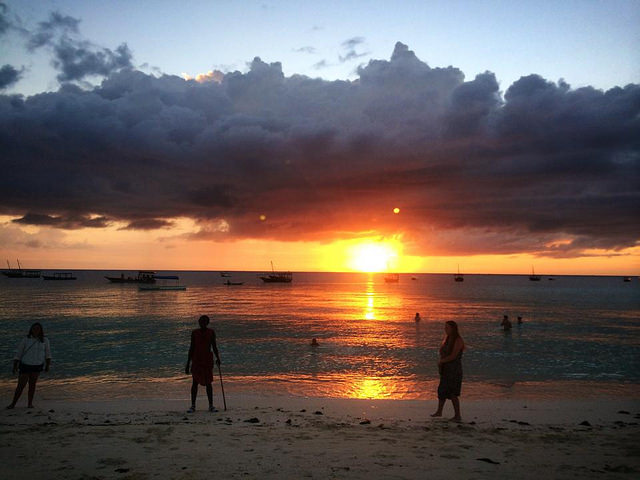 |
| Maasai and Arkansas students in Zanzibar. Photo by Cassie Schirm. |
I could create my own conclusion, but I think Emily sums up Tanzania pretty well:
and realized just where I fit into this whole circle-of-life thing.
Amani, marafik. Hakuna matata.
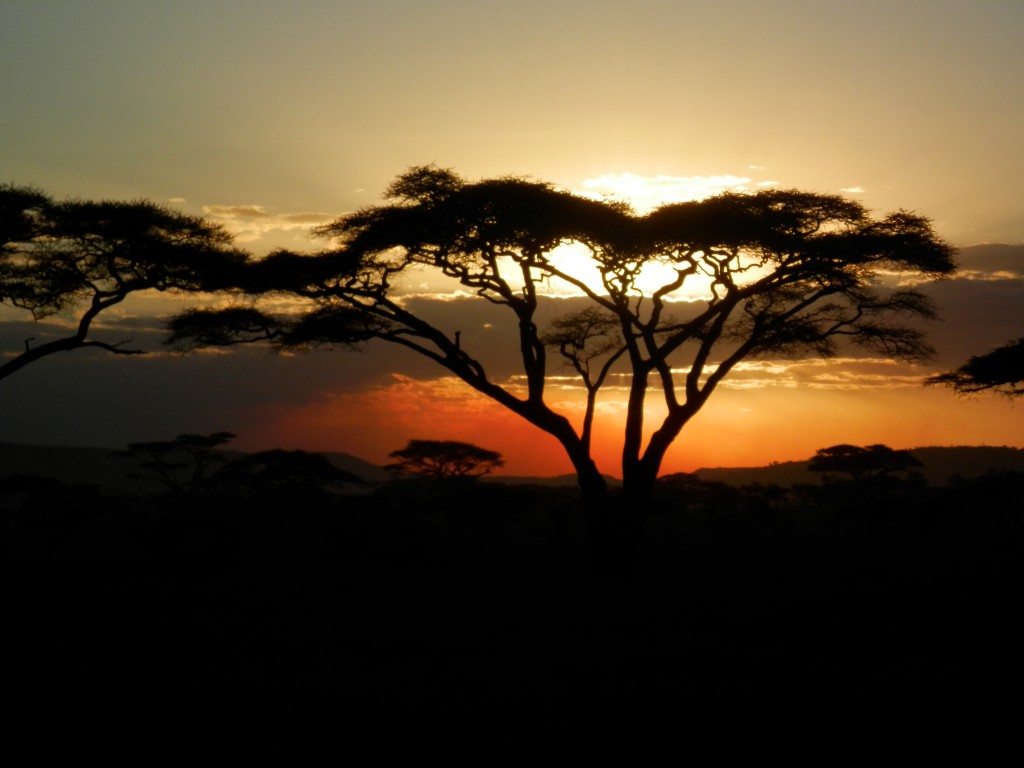 |
| Photo by: Bryce Jones |
Don't miss the opportunity to study in Tanzania summer 2015!
Applications will be available after September 23rd at http://studyabroad.uark.edu/tanzania/
Applications will be available after September 23rd at http://studyabroad.uark.edu/tanzania/
